The MSI MPG A1000G PCIE5 PSU Review: Balance of Power
by E. Fylladitakis on February 2, 2023 1:00 PM EST- Posted in
- Cases/Cooling/PSUs
- PSUs
- MSI
- 80Plus Gold
- ATX v3.0
- 12VHPWR
Cold Test Results (~22°C Ambient)
For the testing of PSUs, we are using high precision electronic loads with a maximum power draw of 2700 Watts, a Rigol DS5042M 40 MHz oscilloscope, an Extech 380803 power analyzer, two high precision UNI-T UT-325 digital thermometers, an Extech HD600 SPL meter, a self-designed hotbox and various other bits and parts. For a thorough explanation of our testing methodology and more details on our equipment, please refer to our How We Test PSUs - 2014 Pipeline post.
When the load is relatively low, the conversion efficiency of the MSI MPG A1000G PCIE5 is wondrously high for an 80Plus Gold certified product, especially while the unit is powered by an 115 VAC source. If not for the swift decline at loads greater than 600 Watts, this unit might have gotten an 80Plus Platinum certification instead. At very low loads, the MPG A1000G PCIE actually is more efficient if powered from an 115 VAC source but, as it usually is the case with such switching-mode power supplies, the average efficiency is significantly higher when the input voltage is 230 VAC. The average nominal load efficiency (20% to 100% of the unit's capacity) is 91.0% with the unit powered from a 230 VAC source, and drops down to 90.1% if the unit is powered by a 115 VAC source.
We performed our testing with the “Zero Fan” mode of the unit disabled, forcing the fan to spin regardless of the load. As we suspected, despite that the fan was spinning, the MPG A1000G PCIE is practically inaudible while the load is lower than about 350 Watts. The high low load conversion efficiency of the unit helps with that, as thermal losses are fairly low and the large fan easily copes with them. The thermal control circuitry reacts very aggressively though and will speed up the fan sharply once the internal temperatures of the unit increase. As such, the MPG A1000G PCIE becomes clearly audible at loads between 50% and 70%. If the load is greater than 700 Watts, the speed of the fan increases very sharply and makes the MPG A1000G PCIE quite loud.


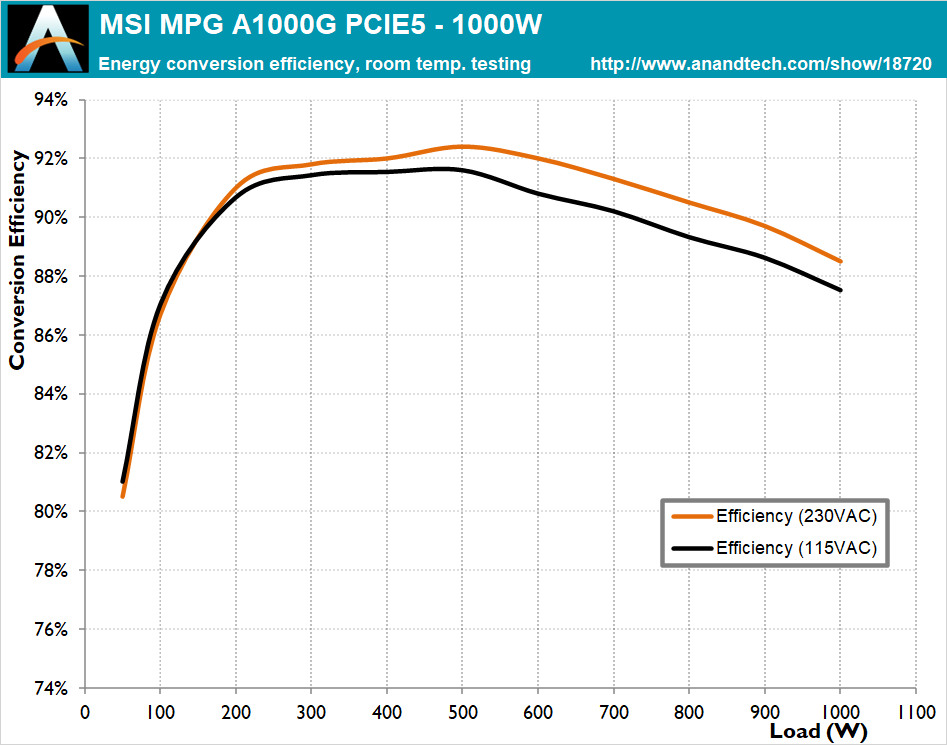
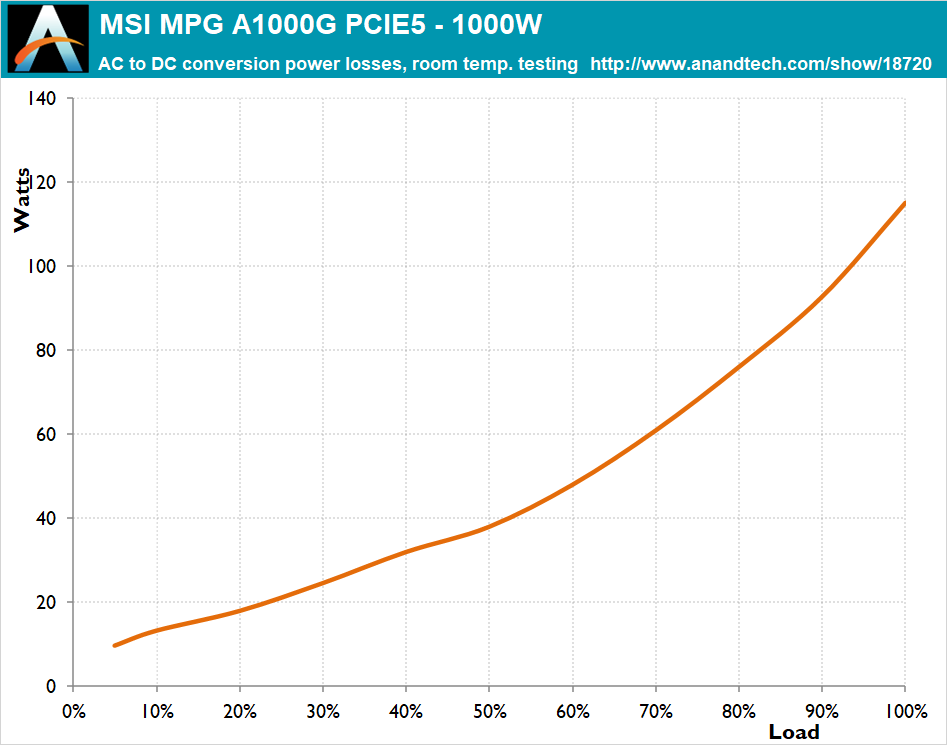
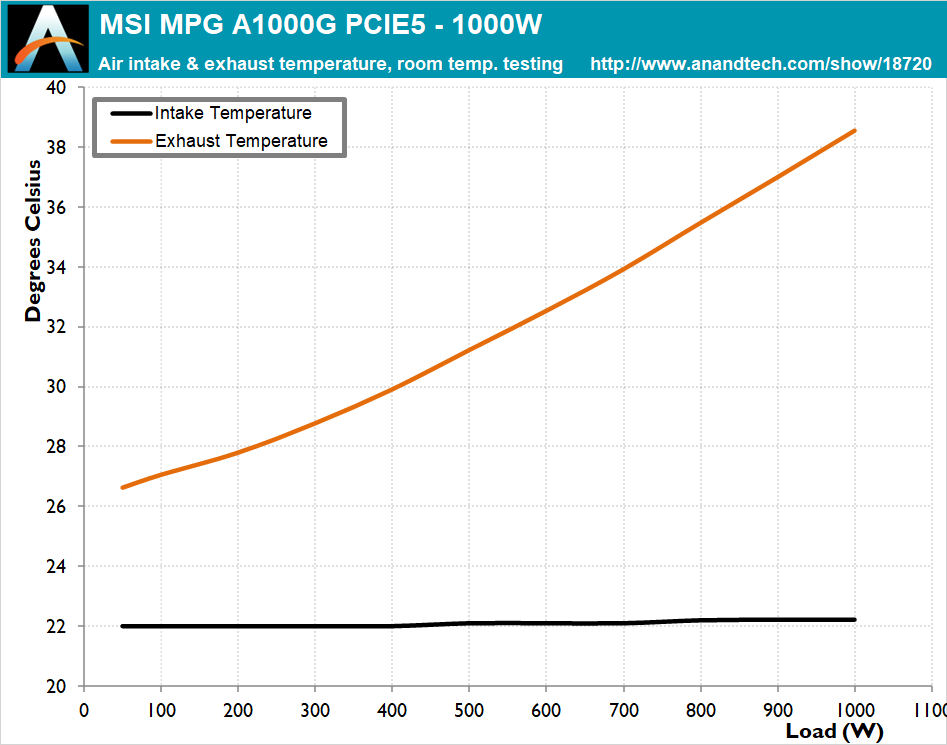
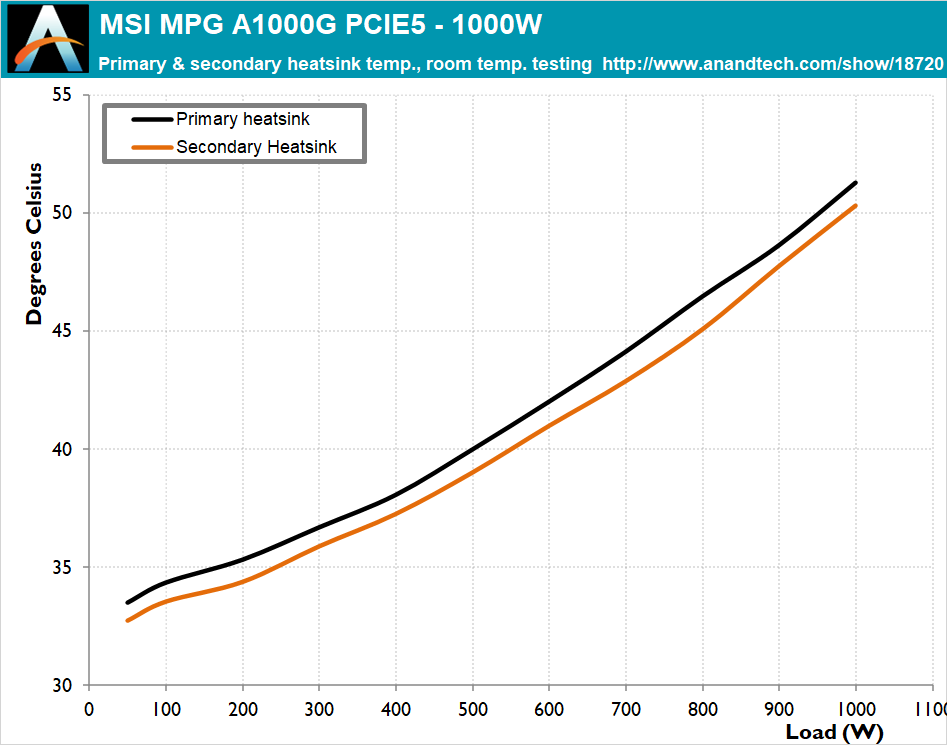
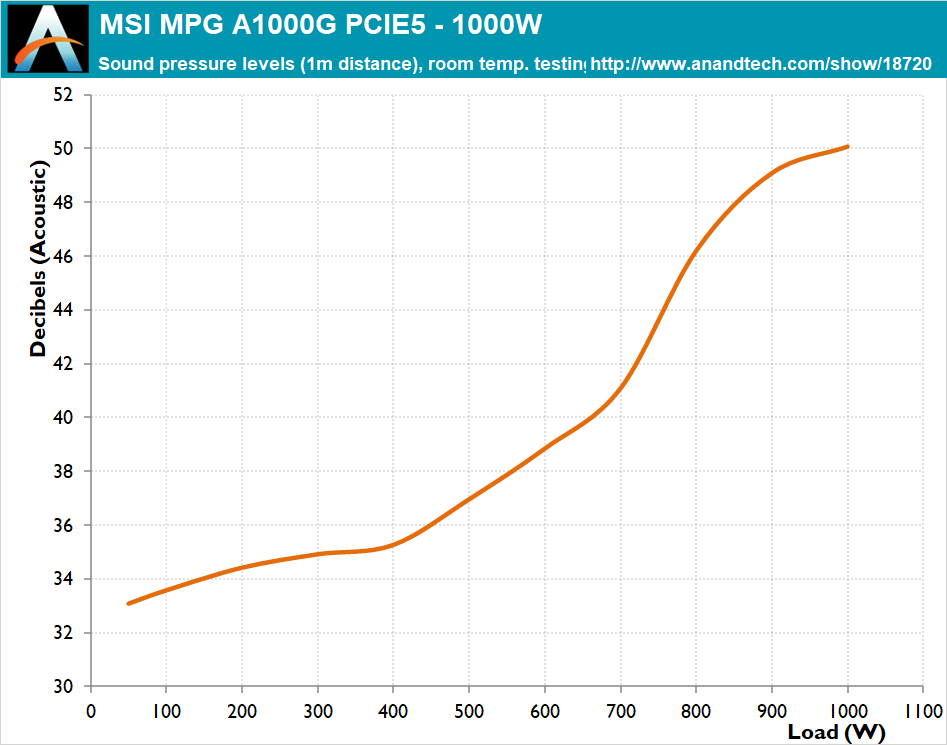








15 Comments
View All Comments
sparkuss - Thursday, February 2, 2023 - link
Picture is of a 220V spec cord. Is that the only cord it comes with or will US Market items have 110-120V cords?DanNeely - Thursday, February 2, 2023 - link
It's a europlug because E. Fylladitakis lives there. The whole reason behind detachable power cords is so that you can switch in the one appropriate for the market it's being sold in. Unless you're buying from a gray market importer it shouldn't be an issue. And unlike UPSes, where the difference in plug sizes can impact how many outlets are available it should work identically.Order from Amazon.de and get that plug, order from amazon.com and get a 5-15 plug.
PeachNCream - Sunday, February 5, 2023 - link
Its also very easy to source the correct wall outlet cable in the US. There are many millions of those lying about the States due to how many desktop PCs there once were and how few currently remain in daily use after the desktopoclypse when laptops took over as primary PCs more than a decade ago along with the fact that said cables are still in production. There's quite the oversupply presently.eriri-el - Tuesday, February 7, 2023 - link
You do know that those are standard called C13 on the cord side and C14 on the PSU side respectively. These are used in many many electrical appliances, for a very long time before computers became a household norm, not just computers. You should look at the behind of all of your appliances in your house more often. There is alot of them in the market because many people use them for many things, not just computers.atragorn - Friday, February 3, 2023 - link
Is it user selectable whether it is 240 or 120 or is it based on the market it is purchased in ?If I buy in the US can I change to 240 is what I want to know.
Also the efficiency will be lower with a single phase 120 line. Is it possible to test that unless it's a European only power supply?
It can be very different possibly.
meacupla - Friday, February 3, 2023 - link
The PSU has an auto-switch, and can handle 100VAC~240VAC 50Hz/60HzIf you buy in North America, to use 240VAC, you should first check if you have a spare 240VAC outlet to begin with, and then check which type it is. There are a few different NEMA
Then you can get a "NEMA (insert plug type) to IEC C13 Power Cable"
temps - Friday, February 3, 2023 - link
Bought one of these to power my rig before any reviews were out... it's nice to see it measures quite well and is actually very efficient in the range my computer spends 99% of its time in.Strange though, my PCIe 5.0 cable was round wound and not flat like this one was. It was the only round cable in the box.
jb14 - Friday, February 3, 2023 - link
I have one of these on order for a rig, to power a MSI 4090 and an i5 13600K + AIO cooler. I'm trying to keep the noise down but see here that at 800W+ (where I may reach gaming) it is annoyingly loud.Can anyone recommend another 1000W PSU which is similar in quality with 12VHPWR, but is quieter at higher wattage? Many thanks
dpenda - Saturday, February 4, 2023 - link
The Bequiet Darkpower 13 seems to fit your request. The Seasonic vertex also seems promising although no reviews out yet. You might also consider going to higher wattage - a less stressed power supply will keep Dan noise down.jb14 - Sunday, February 5, 2023 - link
Yes, I came across the be quiet 13 later and see it's just been released so missed it first time round. The reviews are good so have made the switch to it. Thanks